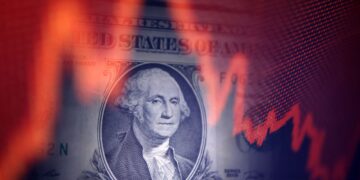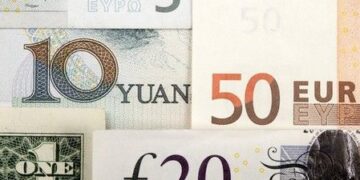By Ed Frankl
Germany’s economic growth at the start of the year was faster than previously reported, as exports and manufacturing jumped on the back of U.S. firms stockpiling goods ahead of President Trump’s tariffs.
Gross domestic product rose 0.4% in the first quarter, more than the 0.2% previously estimated and the fastest rate since the third quarter of 2022, according to German statistics agency Destatis on Friday. Growth in the final quarter of 2024 was down by 0.2%.
Manufacturing and exports registered stronger growth than initially assumed, pointing to a surprisingly good economic development seen in March, Destatis President Ruth Brand said. Exports of goods and services rose by 3.2%, with significant growth recorded for international sales of pharmaceutical products and of motor vehicles.
“Anticipatory effects amid concerns over a brewing trade war with the U.S. are therefore likely to have contributed to the positive development,” Destatis said. Germany exported 41.2 billion euros worth of goods, or around $46.5 billion, to the U.S. in the first quarter.
“Trump makes the German economy great again, for now,” ING economist Carsten Brzeski said in a note to clients, citing that in anticipation of President Trump’s so-called “Liberation Day” tariff announcement, industrial production and exports surged in March.
It comes despite Germany’s economy recently suffering a flurry of downgrades. Both the government and the German Council of Economic Experts–a group of leading economists–expect gross domestic product to flatline this year, having both previously expected moderate growth.
“The German economy is still in a phase of pronounced weakness,” the Council of Economic Experts said in its spring report published Thursday.
But even if the first-quarter performance is clearly the result of one-offs and doesn’t yet look sustainable, it shows that after the recent downgrading of growth forecasts for this year, the next revision is likely to be to the upside, Brzeski said.
The German economy should also get a leg-up from the increased fiscal space available for the new government of Chancellor Friedrich Merz. The government has pledged a ramp-up in defense spending and a 500 billion-euro fund for infrastructure, although much of the boost to the economy might only start arriving later this year.
Further European Central Bank interest-rate cuts ahead, as well as continued increased real incomes in Germany, might also spur consumer spending.
But the Trump administration’s tariff policies remain a clear stumbling block to growth, judging as they disproportionately hit Germany’s export-orientated economy that is home to major car makers such as Volkswagen, BMW and Mercedes-Benz and pharmaceutical giants like Bayer. The tariffs include 25% duties on cars, steel and aluminum, with 10% levies on most other goods.
Write to Ed Frankl at [email protected]
(END) Dow Jones Newswires
05-23-25 0352ET
















